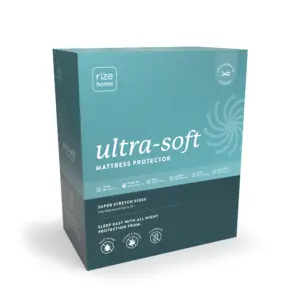Understanding the Endocannabinoid System and Sleep
The endocannabinoid system (ECS) plays a critical role in the human body, influencing various physiological functions, notably sleep. Comprised of neurotransmitters known as endocannabinoids and a network of receptors, the ECS interacts with plant-derived cannabinoids like THC and CBD, which are found in hemp products. While THC produces a psychoactive high, CBD offers calming effects without intoxication. This article delves into the intricacies of the endocannabinoid system and its influence on sleep quality.
The Role of the Endocannabinoid System
At its core, the endocannabinoid system is essential for maintaining homeostasis—a state of equilibrium where all bodily functions operate smoothly. Numerous physiological and cognitive processes are regulated by this system, including sleep cycles, circadian rhythms, appetite, pain management, and stress responses. The ECS incorporates two primary endocannabinoids: anandamide and 2-arachidonoylglycerol. Anandamide, often referred to as the bliss molecule, plays a vital role in mood enhancement and anxiety reduction, particularly after intense physical activity.
Understanding how the endocannabinoid system influences sleep cycles is a growing area of interest among researchers. An imbalance in any of the systems governed by the ECS can disrupt sleep, leading to insomnia and other sleep disorders.
How the Endocannabinoid System Affects Sleep
The endocannabinoid system engages in a delicate dance of interactions with receptors, enzymes, and hormones to restore balance within the body. For instance, when one’s sleep cycle is disrupted, endocannabinoids come into action to help regulate it. Their striking ability to act on specific receptors allows the ECS to restore equilibrium efficiently without affecting other processes.
Two major types of cannabinoid receptors are CB1 and CB2. While CB1 receptors are predominantly found in the central nervous system and brain, CB2 receptors are more associated with the immune system. THC and anandamide both bind with these receptors, generating varying effects on sleep patterns.
Cannabinoids and Their Interaction with the Endocannabinoid System
Cannabinoids derived from cannabis plants, primarily CBD and THC, offer powerful therapeutic potential. THC binds to CB1 receptors, leading to a state of relaxation and calm. In contrast, CBD, which does not produce a high, interacts with various receptors, including those outside the endocannabinoid system, promoting tranquility without adverse psychoactive effects. This distinction makes CBD particularly appealing for individuals struggling with sleep disturbances like insomnia, as it assists in fostering restful sleep without the drawbacks associated with THC.
Interestingly, CBD inhibits the enzyme Fatty Acid Amide Hydrolase, responsible for breaking down anandamide. This inhibition slows down the degradation of anandamide, resulting in elevated levels of this bliss molecule. Consequently, a calmer state can be achieved, facilitating easier transitions into sleep.
The Promise of Full-Spectrum CBD
Using full-spectrum CBD products, which contain a variety of cannabinoids, can enhance the benefits many seek for better sleep. Each cannabinoid contributes uniquely to overall well-being, and their combined effects may create a more therapeutic experience than CBD alone. Research is still ongoing to determine the full impact of the endocannabinoid system on sleep and circadian rhythms, but it is clear that a deficiency in endocannabinoids may correlate with sleep challenges.
Conclusion: Utilizing the Endocannabinoid System for Restful Sleep
With ongoing research into the endocannabinoid system, understanding its impact on sleep becomes increasingly significant. For those facing challenges like insomnia, exploring organically grown CBD oil could provide a potential solution. Ensuring that you choose high-quality products free of contaminants will maximize the efficacy of CBD in binding to the right receptors, promoting calm, and ultimately enhancing sleep quality.
As with any health-related decision, it’s advisable to consult your physician—especially if you’re currently on other medications—to discuss the potential interactions or contraindications associated with CBD use. While the endocannabinoid system holds promise for improving sleep, informed choices are key to achieving optimal health and restful nights.
FDA Disclaimer
The statements regarding these products have not been evaluated by the Food and Drug Administration. The efficacy of these products has not been confirmed by FDA-approved research. These products are not intended to diagnose, treat, cure, or prevent any disease. Always consult your healthcare professional about potential interactions or complications before using any product. The Federal Food, Drug, and Cosmetic Act requires this notice.













